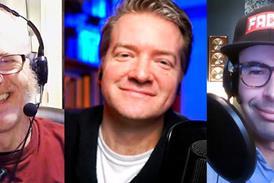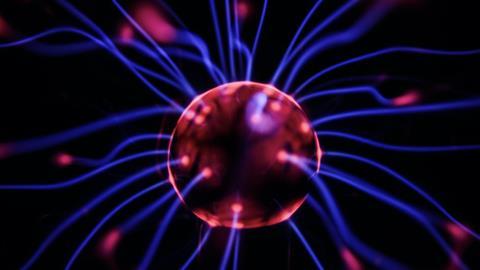Following a recent Big Conversation, Dr Erik Strandness explores the relationship between the brain and mind, near death experiences, the existence of the soul and the perceived conflict between religion and science
Dr Erik Strandness, in a two part article, comments on The Big Conversation between Christian speaker and former neuroscientist Dr Sharon Dirckx, author of Am I Just My Brain?, and atheist philosopher Dr Emily Qureshi-Hurst, author of God, Salvation, and the Problem of Spacetime, in which they discussed the relationship between the brain and mind, the existence of the soul, and the unusual phenomenon of near death experiences (NDE). To watch or listen to the whole Big Conversation episode, click here.
Mapping the homeland
When one enters a discussion about the mind and soul, one crosses into that fuzzy and often times contentious borderland between religion and science. It is an area best explored by thoughtful experts with a shared interest in both “magisteria”. We were treated to just such an exchange on the most recent episode of The Big Conversation with Dr Sharon Dirckx and Dr Emily Qureshi-Hurst.
Qureshi-Hurst began by pointing out that these discussions often become heated and unproductive when the participants don’t carefully define their terms ahead of time. She pointed out how religion can be defined in many ways (one god, many gods, no god) and when used generically, can create confusion. Similarly, she pointed out that even the word “science” can have different meanings such as a body of knowledge, methodology or specific discipline. It was in this spirit of shared clarity that their conversation specifically contrasted Dirckx’s Christian view of the mind, brain and soul with Qureshi-Hurst’s atheistic worldview in the context of their shared interest in neuroscience.
Dirckx resists a reductive approach to neuroscience and believes the Christian worldview harmoniously unites mind and brain. Qureshi-Hurst, on the other hand, believes the growing body of scientific data is making it clearer that the mind is just the brain and, while not hostile to Christianity, she has little patience with its fundamentalist expression that denies scientific absolutes such as evolution and the age of the Earth.
Dirckx helpfully compared Christianity and science to different types of maps depicting the same reality but from different perspectives, one describing the physical topography and the other representing the spiritual landscape, and that these maps, rather than describing two different countries, give us a more complete understanding of our homeland. Qureshi-Hurst, on the other hand, seems to believe that the only cartographer necessary to map reality is a neuroscientist.
Read more:
McGilchrist’s brain science points towards God.
Is there a master behind our mind?
Atheists like Dennett are wrong about consciousness
Mind over matter
While discussions like these are often characterised as disagreements between science and religion, the real conflict is over the fundamental composition of the Universe –is it matter alone or is there also a spiritual component? Is life just a chemical cocktail that prefers to be physically shaken and not spiritually stirred or is there a ghost haunting the biological machine?
As I described in my article analysing the Big Conversation between Nick Spencer and Philip Ball, the non-overlapping religious and scientific magisteria proposed by Stephen J Gould actually do overlap when it comes to the study of the human mind.
Qureshi-Hurst expressed confidence in the ability of neuroscientific technology to disprove mind-brain dualism. Dirckx, however, was not so convinced because neuroscience only measures brain anatomy and physiology but has no metric for evaluating conscious experience. She pointed out that the nature, or content, of our subjective experiences, what philosophers call qualia, has no neurophysiological correlate. For instance, a researcher can have an experimental subject smell a cup of coffee and detect the olfactory region of the brain lighting up on a brain scan but has no way of measuring the delicate fruity notes and hint of chocolate experienced by a coffee snob.
Qureshi-Hurst acknowledged that it often does feel like we have a mind but as neuroscience has progressed, we have found that the activities we associate with the mind are located in specific physical spaces in the brain suggesting an organic source. She also noted that the dramatic changes that occur in personality when certain areas of the brain are damaged suggests a neuronal origin. At a minimum, she believes that there is a significant relationship between brain function and the attributes we associate with the mind.
The problem with her argument is that it is one thing to measure objective physical expressions of brain activity but quite another to correlate those findings with the subjective immateriality of qualia, thoughts and first-person experiences.
Neuroscience is a wonderful discipline but merely measures the material edge of the mind/brain interface and has nothing to say about the dark side of the mental moon. It seems more plausible that the brain is a sophisticated transducer that must necessarily distribute the specific functions of a simple singular mind over a variety of anatomic areas in order to effectively interact with a world composed of multiple physical parts.
Statistical outliers
I think the bigger question that is often overlooked by neuroscientists is why humans are so darn spiritual.
Medicine is always on the lookout for statistical outliers because that is where the pathology resides, and whether it is the level of cholesterol, measures of foetal growth or brain anatomy, any value that lies outside the normal distribution demands an explanation. For example, physicians don’t interrogate those with normal thyroid hormone levels but only investigate those who lie outside the statistically determined norm.
Interestingly, despite the loud atheist voices, only 7 per cent of the world’s population are atheists. A statistic which should pique the interest of every scientist and prompt them to ask what is going on with the non-believers?
Oddly enough this sound medical paradigm is turned on its head and the religious are asked to explain themselves. In scientific terms, it seems strange that the statistical outliers would demand that the normal distribution justify themselves. Maybe we need to spend less time imaging the brains of religious people praying and meditating and instead scan the brains of atheists reading Nietzsche.
Putrefied meat
“I think we need to bring scientific rigour to it, but what’s fascinating about it is it seems that spiritual realities are now being observed in a clinical context.” (Sharon Dirckx on The Big Conversation)
Physicians know that medical care is more than lab tests, colonoscopies and pap smears. It also requires attention to the emotional and spiritual health of our patients because we know that the mind can have dramatic effects on their physical well-being. Sadly, a materialistic understanding of the human mind renders a patient’s mental health a peripheral issue better addressed by pharmaceuticals than psychotherapy. I think this is also one of the reasons conventional medicine has fallen out of favour and been replaced by an interest in alternative medicine because patients want their healthcare worker to care not just about their bodies but also about their souls.
We know that the mind can dramatically affect the body, but if the mind is just matter why would it be at odds with its fellow chemicals? Why would the brain feud with its fellow organs? Shouldn’t we have evolved harmony between the brain and body rather than discord?
When physicians test drugs and therapies they must always include a placebo group in order to control for the effects of the mind because we know that the mind is often just as potent as the medication being tested. The mere fact that a mind can mimic medicine is quite astounding. Basic scientists can lecture us on neural networks, neurotransmitters and PET scans but physicians know that when they treat a patient they must also eavesdrop on the mind-body dialogue.
Mental illness is a prime example of the limitations of neuroimaging. We cannot make the diagnosis based on a brain scan or EEG but must recruit the help of psychiatrists, psychologists and counsellors to ask the proper questions to collect the necessary “immaterial” or “mind” data, such as memories, feelings and phobias so that they can make the correct diagnosis and recommend the proper therapy. The mental health specialists know that they are caring for a mind and not a brain and although they may use physical medications to assist them, they also know that without psychotherapy the treatment would be incomplete. Mental illness seems to be the result of a mind struggling to make its way through a physical world which would seem to necessitate soul surgery and not just a chemical adjustment.
Interestingly, despite advances in neuroimaging techniques and neuroactive medications, we need psychiatrists, psychologists, and mental health counsellors more than ever. It seems a bit surprising that as our understanding of brain chemistry has improved, we now need more experts on the mind. It appears that the more we view the mind as a meat computer the more it putrefies.
Get access to exclusive bonus content & updates: register & sign up to the Premier Unbelievable? newsletter!
Out of body experience
How is it possible for a brain to step outside its cranium and contemplate itself? Why would a neural network be interested in how it’s wired? The very fact that science is on the outside looking in suggests it is having its own out-of-body experience (OBE), and while scientists ignore the fact that they are experiencing intellectual OBEs, the rest of us are fascinated by reports of near-death experiences (NDEs).
Atheists try to cut the power to the divine but then, much to their dismay, are confronted by an interesting group of people who switch it back on with each new NDE encounter with a bright light. Dirckx recognizes that one cannot base their faith on these experiences but finds them quite extraordinary. She noted that they aren’t just fantastic stories but display regularities that should be of great interest to pattern seeking scientists.
Qureshi-Hurst pushed back on the common features of these experiences pointing out how they are appropriated differently depending on one’s cultural background. She said: “These are visions from a dying brain and you’re filling in your own cultural expectations into those experiences.”
Dirckx, however, noted that the common features of NDEs are actually free of cultural baggage such as a bright light, overwhelming love, encountering deceased relatives, not wanting to return and a changed life. It may be true that the significance of these events are later interpreted in a culturally or religiously specific fashion, but the experiences themselves are quite generic.
Qureshi-Hurst doesn’t deny the credibility of those who describe these experiences but wants to be very careful about what we do with the data. She notes that these people haven’t died, so even if there is no detectable brain activity, that doesn’t mean something isn’t going on that we don’t yet have the technology to measure. The problem with her reasoning is that our common clinical experience is that when cells are deprived of oxygen, they don’t work better but worse. It would seem odd indeed if a mere neuron had a “come to Jesus” moment when it was in the throes of death.
Qureshi-Hurst spoke of the imaginative mind forming an experience under these terminal conditions, but the problem is that appealing to an imaginative mind means that chemicals can dream, and it seems to me that for neurons to fantasise they need more energy and a cerebral power outage would seem incapable of fuelling the imagination. As Dirckx stated: “There’s a disproportionality there that needs explanation, their brain is shutting down, but they are more awake, more alive and more free than ever. How do we make sense of that?”
Ideas have consequences, and in the second part of my analysis I will go beyond the intellectual debate and ask how these contrasting visions of the mind and soul shape our understanding of the human person and the consequences that understanding has for society.
Erik Strandness is a physician and Christian apologist who has practiced neonatal medicine for more than 20 years.























